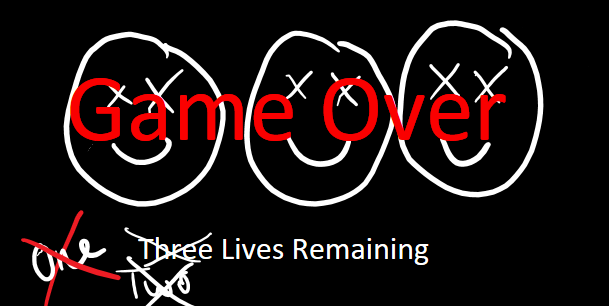I’m Thinking of a Number Twine Game *
(Right click and select “Open in New Tab” to download the file. Can be run with any web browser)
Reflecting on the Creation of a Twine
In creating my first – and what I promise to be my last – Twine, I took a very slow approach that likely led to a lot of my frustrations and wasted time. Whereas I probably should have created a simple “choose your own adventure” style story and laid out different pathways first on paper (like an inter-connected storyboard), I instead jumped straight into the creation process using Twine, creating passages without a true idea of where my story would go. It definitely isn’t the approach that I would take a second time around, and as you can tell from “playing” my Twine (I use that term quite loosely here), I scrapped the story idea altogether in favour of a simple game. Part of the reason why I eventually opted against the “choose your own story” approach is because I grew to dislike the genre as a child. I purchased one from the famous Goosebumps writer R.L. Stein back in the day, and was disappointed at how, in order to feel as though I got enough value out of the book, I needed to retrace my steps and take each pathway, I needed to read all the words that had been written. It made for a convoluted process that took the joy out of the reading. Personally, I find that the multiplicity of reading arrangements that Bolter (2001) references, more commonly through book indices and internet hyperlinks, can be useful when looking for specific information, but a detractor when engaged in storytelling. Ironically, I digress…
As I struggled through trial and error to understand the components beyond simple hyperlinking, I became less concerned with creating an entertaining product and more concerned with showing proficiency at some of the slightly more advanced capabilities, like using the basic logic arguments to display different components on the same passage at different times, as well as attaching gifs and linking to external sites in new tabs. At certain junctures I wasn’t able to achieve exactly what I’d hoped to do, and I had to change my strategy as a result. One major issue that I found with my game design is that hyperlinks would change colours once the passage they linked to had been accessed. This meant that I couldn’t simply have a single linked passage for incorrect answers, because upon returning to the previous screen to try again, all of the incorrect answers sharing that link would change colour (making the correct answer obvious). I think little drawbacks like that issue really prevented me from taking my game further, and I think I ended up focusing less on the language and reading implications of the exercise and more on the technical components. Regardless, in the end it was an interesting and entertaining process attempting to create an interactive product using a program I was previously unfamiliar with.
References
Bolter, J. D. (2001). Writing space: Computers, hypertext, and the remediation of print. Routledge.
* small issue debugged Feb. 17, 2021

I think, irrespective of how creative or not you think your game is (I thought it was great!), your reflection speaks to something Bolter (2001) mentions on page 44, “hypertext is a process as much as a product.”
Hi Deirdre,
I’m glad that you liked it. I guess I just wish I knew how to randomize the game so that it could be played consecutive times. Every so often I find that I’m kicking myself for not pursuing coding beyond what I was forced to do for my undergrad. Although I think you’re giving me too much credit for touching on Bolter’s talk of the experience created being a process (I think I was speaking more of myself having gone through a process (or maybe an ordeal?) to create the Twine), I guess what is created is very much a process for the “reader” (a term I’m using quite loosely here).
Hi James, I would have to agree with what Deidra mentioned about it being a process. It was also my first time trying out Twine and I aimed for the simple story. I did find I got frustrated especially when I thought I lost the whole thing (which I didn’t) and then I got more into it and even tried to add some soundbites. I did try it with my grade 6 students the following week and they loved it. They were so engaged in writing their stories and did not want to stop. Despite the earlier frustrations it was well worth the journey. Hope you do give it another shot.
It’s nice to hear that your students enjoyed the task. I’m not sure there’s any way I can justify using it in my secondary math courses, but it’s definitely something I will keep in mind for colleagues who might find it a bit more applicable.